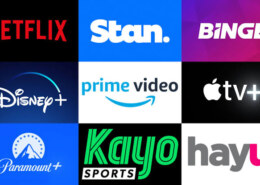The film industry is in the midst of a digital revolution, and streaming services are at the forefront of this transformation. The rise of platforms like Netflix, Amazon Prime Video, Disney+, and others has fundamentally altered the way we consume and produce films. In this article, we explore the profound impact of streaming services on the film industry.
1. Changing Distribution Channels
Streaming services have disrupted traditional distribution channels. The once-dominant model of releasing films exclusively in theaters before moving to home video has given way to simultaneous or exclusive digital releases. This shift has democratized access to films, making them available to a global audience instantly.
2. Diversity and Inclusivity
Streaming platforms have created opportunities for underrepresented voices and stories. They have produced and promoted films that reflect diverse cultures, backgrounds, and perspectives, which might have struggled to find a place in the traditional Hollywood system. This has led to greater inclusivity and representation in the industry.
3. Content Proliferation
The demand for original content on streaming platforms has led to a proliferation of films. These platforms are not limited by the constraints of physical theaters or cable schedules, enabling them to produce and release a wide variety of films, including niche and independent titles. This expansion has been a boon for filmmakers and audiences seeking diverse options.
4. Impact on Theatrical Experience
The rise of streaming has raised questions about the future of movie theaters. While streaming offers convenience and choice, it has also challenged the traditional theatrical experience. Some studios now prioritize digital releases over theatrical runs, leading to debates about the relevance and sustainability of cinemas.
5. Global Reach and Localization
Streaming platforms have a global reach, allowing films to find audiences worldwide. This has encouraged filmmakers to consider international markets during production, leading to increased localization efforts, including subtitles and dubbing. It has also facilitated cross-cultural storytelling.
6. Data-Driven Content
Streaming platforms leverage data and algorithms to tailor content recommendations to individual viewers. This data-driven approach extends to film production, with studios using viewer preferences to inform creative decisions, casting choices, and even script development.
7. Impact on Awards and Recognition
Streaming services have disrupted traditional award ceremonies. Films released on streaming platforms are now competing on equal footing with theatrical releases for prestigious awards like the Oscars and Golden Globes. This has challenged established norms and recognition processes.
8. Revenue Models
Streaming services have introduced new revenue models for filmmakers. Instead of relying solely on box office earnings, creators can negotiate licensing deals and royalties with platforms. This diversified income stream has changed how filmmakers monetize their work.
9. Challenges and Competition
The surge in streaming services has led to increased competition for subscribers and content. While established platforms dominate, new entrants continually emerge, intensifying the battle for exclusive content and viewer loyalty. This competition can drive innovation but also strain resources.
10. Evolving Creative Freedom
Streaming platforms often offer creators more creative freedom and flexibility. Filmmakers can explore unconventional storytelling formats, tackle controversial topics, and experiment with different genres, all of which may be more challenging within the constraints of traditional studio systems.
In conclusion, streaming services have reshaped the film industry in profound ways, from distribution and content creation to the viewer experience. While these platforms have brought about positive changes such as diversity and inclusivity, they have also raised important questions about the future of theaters and industry dynamics. The impact of streaming on the film industry continues to evolve, and it will be fascinating to see how these changes shape the cinematic landscape in the years to come.

